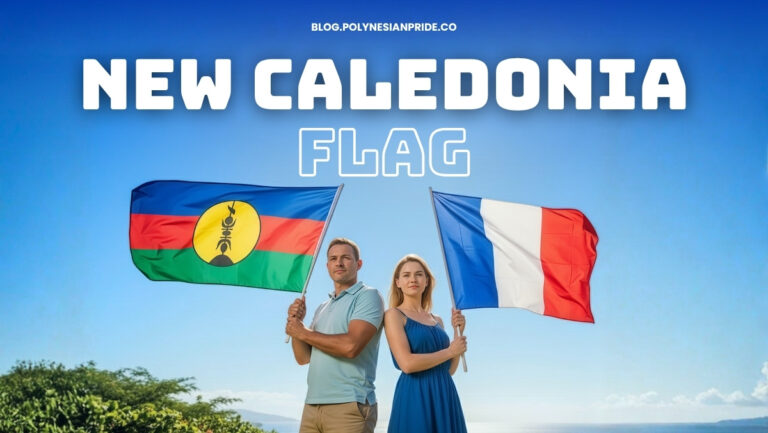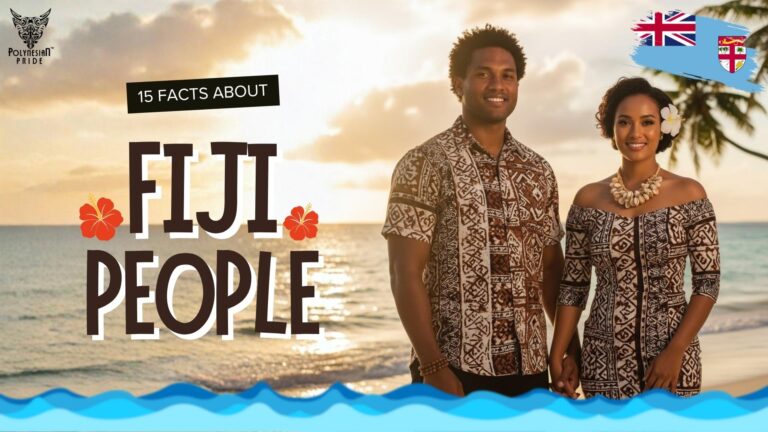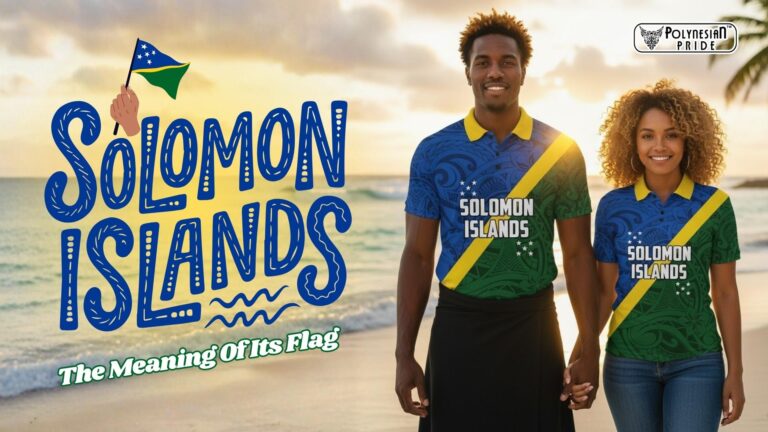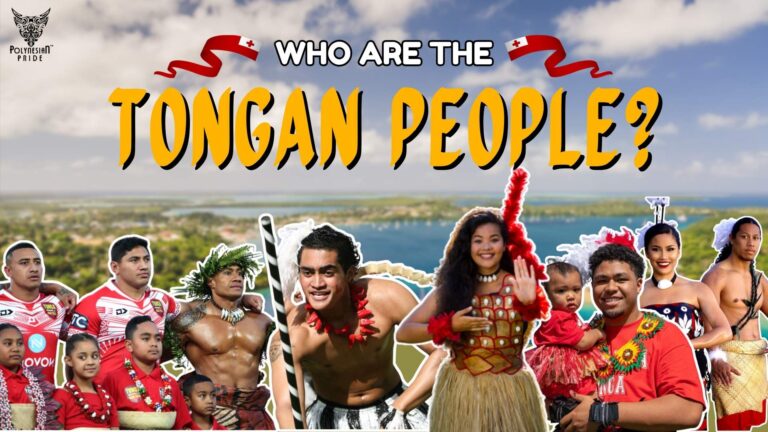Where Is New Caledonia? A Piece of Europe in Oceania

Many people have heard of New Caledonia, yet have you ever wondered exactly “Where is New Caledonia?” Tucked between Australia, Vanuatu, and Fiji, this island paradise is one of the most fascinating French territories in the South Pacific. Though small in size, it holds an outsized charm — a place where European sophistication meets Melanesian culture, and turquoise lagoons stretch as far as the eye can see.
New Caledonia is actually a French overseas collectivity, giving it a rare dual identity — part of the French world, yet deeply connected to Melanesian traditions. Now with us, discover New Caledonia’s exact location, geography, political status, culture, and what makes it so remarkable.
Quick Facts About New Caledonia
- Official name: Territory of New Caledonia and Dependencies
(Territoire de la Nouvelle-Calédonie et Dépendances). - Total Area: Around 19,000 km²
- Capital: Nouméa
- Population: Around 297,000 people in 2025
- Languages: French (official), plus 30+ Kanak dialects
- Currency: CFP Franc (XPF)
- Main island: Grande Terre
- Time zone: UTC +11
- Flag: Dual flags – the French Tricolour and the Kanak flag
- Cultural Symbols: Kanak flag, flèche faîtière, tropical lagoons
- UNESCO Site: New Caledonia Barrier Reef
Where is New Caledonia? Location and Geography
New Caledonia’s stunning landscape and strategic position make it one of the most remarkable destinations in the South Pacific. Its geographical location gives it both ecological significance and cultural diversity. Serving as a vital link between the Melanesian islands of Oceania and the broader French territories of the Pacific Ocean.
Position in the Pacific Ocean
New Caledonia lies in the Southwest Pacific Ocean, roughly 1,200 kilometers (750 miles) east of Australia and 1,800 kilometers (1,120 miles) northwest of New Zealand. It sits just south of the Equator and west of Fiji and Vanuatu, placing it at the crossroads of major Pacific cultures and ocean routes.
- Exact coordinates: 21° S, 165° E
- Nearby countries: Australia (to the west), New Zealand (to the southeast), Vanuatu and Fiji (to the northeast)
- Surrounding waters: The Coral Sea and the South Pacific Ocean
- Surrounding seas and reefs: Bordered by the Coral Sea and protected by the New Caledonia Barrier Reef, one of the world’s largest reefs.
Surrounded by tropical waters and steady trade winds, the archipelago enjoys a mild climate and a rich marine environment that supports both local livelihoods and biodiversity.
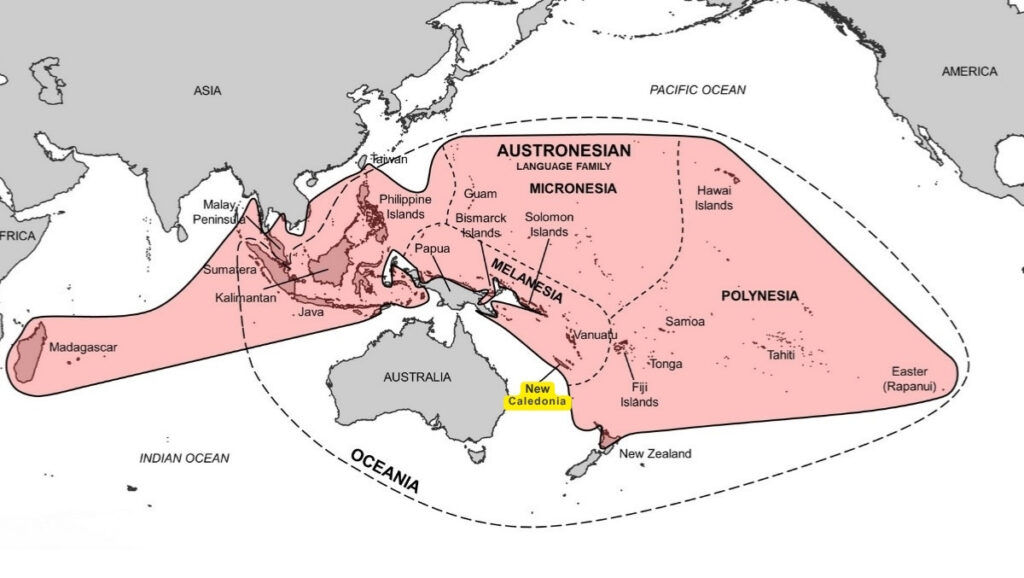
Map and Territorial Overview
The territory of New Caledonia is made up of one large main island, Grande Terre, surrounded by several smaller island groups — the Loyalty Islands, the Isle of Pines, and the Bélep Archipelago. Together, they cover approximately 19,000 square kilometers (7,300 square miles) of land, enclosed by one of the world’s most extensive and pristine lagoon and coral reef systems, listed as a UNESCO World Heritage Site.
1. Grande Terre – Central Island
The largest and most populated island, forming the economic and administrative hub of New Caledonia. Its mountainous backbone, the Chaîne Centrale, runs north to south, shaping fertile plains and rich nickel deposits. The capital city, Nouméa, lies on its southwest coast, blending tropical scenery with French architecture. Grande Terre enjoys a warm tropical climate, supporting rainforests, savannas, and coastal mangroves.
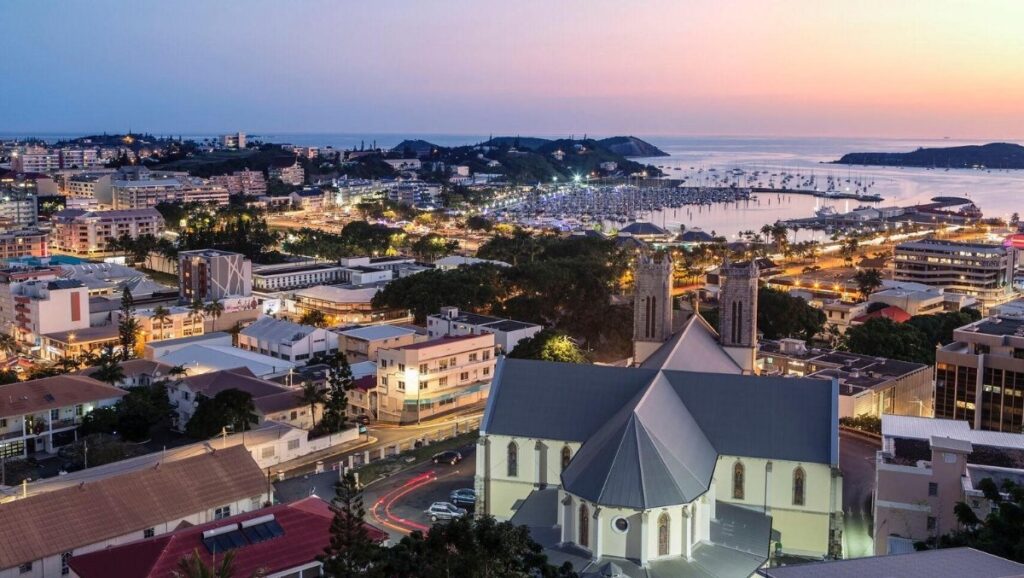
2. Loyalty Islands – To The East
This group consists of Lifou, Maré, and Ouvéa, each known for its dramatic cliffs, turquoise lagoons, and dense coconut groves. These islands are considered the cultural heartlands of the Kanak people, where ancient traditions and communal living are preserved. Today, they are also centers for eco-tourism and cultural experiences rooted in Melanesian heritage.
3. Isle of Pines – To The South
The Isle of Pines (Île des Pins) is often described as “the closest island to paradise.” This is a major tourist destination and a symbol of New Caledonia’s natural beauty with white-sand beaches, emerald lagoons, and the iconic Araucaria pine trees that pierce the skyline. Despite its popularity, the island retains a tranquil charm, balancing luxury resorts with the serenity of local Kanak villages.
4. Bélep Archipelago – To The North
This is a small, remote cluster of islands known for fishing, subsistence living, and pristine marine ecosystems. Sparsely populated, it offers a glimpse into traditional lifestyles largely untouched by modern development. Its clear waters and coral reefs make it a haven for marine biodiversity.

Collectively, these islands form a microcosm of Melanesia, representing both cultural richness and environmental diversity. As part of the broader Melanesian region (which includes Vanuatu, Fiji, Papua New Guinea, and the Solomon Islands), New Caledonia stands as a cultural crossroads and ecological treasure in the South Pacific.
Political Status and Connection to France
New Caledonia holds a unique political position within the French Republic — neither an independent nation nor a traditional colony. Instead, it is officially classified as a French overseas collectivity, granting it a high degree of autonomy while maintaining strong institutional, legal, and cultural ties to France.
French Overseas Collectivity Status
Under this arrangement, New Caledonia manages most internal affairs through its local Congress and Government of New Caledonia. At the same time, France retains control over areas such as defense, foreign policy, currency, and justice. This system reflects a balance between self-governance and French sovereignty — a political model shaped by decades of negotiation and compromise.
Key milestones include:
- 1988 – Matignon Accord: Established peace after years of unrest and created a framework for political stability.
- 1998 – Nouméa Accord: Granted greater autonomy, recognized the Kanak people’s identity, and set the path for future independence referendums.
- 2018, 2020, and 2021 – Independence Referendums: Three referendums held under the Nouméa Accord resulted in a majority voting to remain part of France, though the margin varied, and political debate continues.

Dual Flag Policy
One of the most symbolic outcomes of New Caledonia’s evolving relationship with France is its dual flag policy. Since July 2010, both the French Tricolour and the Kanak flag have been flown together on official buildings.
- The French Tricolour represents New Caledonia’s constitutional ties and shared values with France.
- The Kanak flag, designed by the FLNKS (Front de Libération Nationale Kanak et Socialiste), embodies indigenous heritage and the ongoing pursuit of cultural recognition.
- The Congress of New Caledonia formally endorsed this dual display to honor both communities — French and Kanak — as equal parts of the territory’s identity.
While the policy symbolizes reconciliation and coexistence, it has also sparked ongoing discussion about whether New Caledonia should eventually adopt a single unified flag representing all its people.
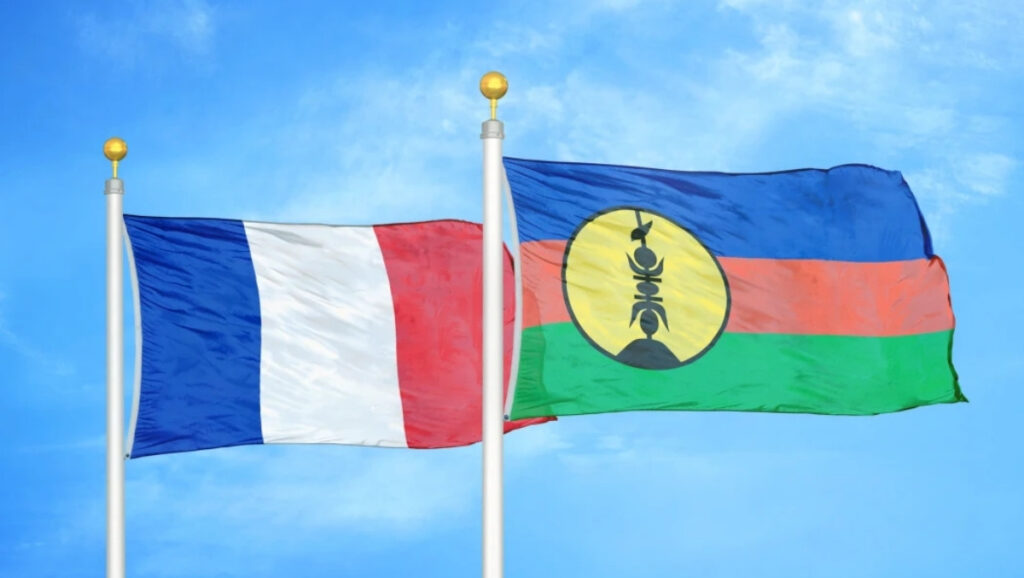
Connection to France Today
France remains to play an active role in New Caledonia’s economy, education, and defense, supporting infrastructure and public services while fostering close cultural links. The French language, currency (CFP Franc), and legal system are still in use, and many residents hold French citizenship.
At the same time, the local government promotes Kanak traditions and Melanesian identity, ensuring that cultural recognition accompanies political cooperation. This dual structure — French authority alongside local self-rule — makes New Caledonia a rare example of shared sovereignty in the modern world.
Today, the relationship between France and New Caledonia remains one of mutual interdependence, blending European administration with Pacific heritage. This partnership continues to evolve as the territory shapes its future.
Culture and People of New Caledonia
New Caledonia’s culture is a rich mosaic of Melanesian traditions, French influence, and Pacific island heritage. This blend has created a society that feels both European and Oceanic — modern yet deeply connected to its ancestral roots.
The result is a land where Kanak rituals, French cuisine, and tropical island life coexist in remarkable harmony.
The Kanak Heritage
The Kanak people, the Indigenous inhabitants of New Caledonia, form the cultural foundation of the archipelago. Their way of life revolves around clan identity, land, and community, guided by Custom (la coutume) — a traditional system of respect and reciprocity that governs social harmony.
Every exchange, ceremony, and alliance among clans is rooted in this philosophy of balance and mutual recognition.
- Visitors can witness Kanak culture through music, dance, and art, often using natural materials such as wood, shells, and pandanus.
- The flèche faîtière (carved rooftop spear) is a key symbol of Kanak identity, representing protection and ancestral presence.
- Traditional round huts, tribal gatherings, and storytelling continue to thrive, particularly in the Loyalty Islands and the Northern Province.
Through these symbols and customs, the Kanak people preserve a worldview where land, family, and spirit are inseparable. This is a philosophy that continues to shape Kanak life across generations, remains alive even as New Caledonia evolves into a modern, multicultural society.

French Influence
Since becoming a French territory, New Caledonia has absorbed many aspects of French culture — from the language and education system to its culinary sophistication and administrative structure. In Nouméa, French bakeries, cafés, and architecture give the capital a distinctly European charm, while island life retains its relaxed Pacific rhythm.
- Language: French (official), alongside 30+ Kanak and regional languages.
- Cultural blend: European + Melanesian + Pacific
- Multicultural population: Kanaks, Caldoches (local Europeans), Métropolitains (from mainland France), Polynesians, Indonesians, and Vietnamese.
Cuisine, Festivals, and Daily Life
New Caledonia’s lifestyle is a colorful blend of French refinement and Pacific warmth, expressed through its food, celebrations, and the easygoing rhythm of everyday life.
- Cuisine: The local cuisine reflects the archipelago’s dual heritage — French culinary tradition meets Melanesian flavors. Fresh seafood, coconut milk, taro, yams, and tropical fruits appear alongside French staples like baguettes, pastries, and fine wines.
- Festivals: Throughout the year, the islands come alive with cultural and seasonal festivals — the Yam Festival celebrating the Kanak harvest, the Avocado Festival in Maré, and French national holidays such as Bastille Day. Events often feature traditional dances, music, and food, bringing together communities across cultures.

At its heart, New Caledonia is a place where two worlds live as one. French culture adds refinement and global connection, while Kanak heritage provides soul, spirituality, and a deep sense of belonging. Together, they form a shared identity that celebrates harmony in diversity — a way of life found nowhere else in the South Pacific.
Final Thought: Where New Caledonia Truly Belongs
Now that you know where New Caledonia is located, it becomes clear that this island group is not only a paradise but also a strategic link in the South Pacific. Positioned between Australia and Fiji, it serves as a vital bridge between France and Oceania, playing an active role in trade, diplomacy, and environmental cooperation.
Today, New Caledonia stands as a premier travel destination for lovers of the sea, culture, and history — truly “a piece of Europe in the Pacific.” If you plan to visit, the best time to experience New Caledonia is September to November, when the weather is sunny and mild. Avoid the cyclone season (January to March) to enjoy calm seas and perfect tropical days.
A land of contrasts — French yet Pacific, modern yet traditional — New Caledonia invites travelers to explore its coral reefs, its history, and its soul. It is a living story of where Europe meets the South Pacific and two worlds become one.
FAQs
Is New Caledonia part of France?
Yes. New Caledonia is a French overseas collectivity, meaning it is part of France but has autonomy in governance under the Nouméa Accord (1998).
What islands make up New Caledonia?
The territory includes Grande Terre, the Loyalty Islands (Lifou, Maré, Ouvéa), the Isle of Pines, and several smaller islets.
Which countries are closest to New Caledonia?
The nearest countries are Australia (west), Vanuatu (northeast), and New Zealand (south).
What language do people speak in New Caledonia?
French is the official language, while the indigenous population also speaks over 30 Kanak languages.

I am Leilani Miller – I research focusing on Vanuatu – volcanic landscapes, blue holes, coral reefs & rainforests. I have over five years of experience researching and sharing insights on tourism and environmental activism. Explore and experience without limits through my latest article.
Contact information:
Email: [email protected]
Tel: +1 (808) 555-1528

